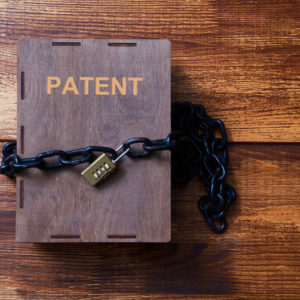In the face of the twin crises of public health and economic contraction, bold measures are necessary to stop the spread of COVID-19 and bring about a swift recovery.
Washington must also help revive domestic manufacturing and mitigate the risks posed by a supply chain that can be throttled by Chinese Communist Party edicts. Accomplishing all this requires reforming the U.S. patent system.
The basic idea behind protecting patents is sound. It provides innovators with a way to recoup the upfront costs of investment, and owning a patent is a signal of quality that makes startups attractive to investors.
But, as with any other government program, the implementation of this basic idea is vulnerable to being abused, and that abuse results in harm to business growth and economic development.
On average, patent examiners have a mere 19 hours to examine a patent. Simply doubling the time given to examiners — or increasing the number of patent examiners could save almost $600 million per year in litigation costs without directly changing patent law.
But even with such a change, patent examiners are only human, and it’s unreasonable to expect that every single patent issued will be valid. This is the value of the inter partes review (IPR) process administered by the Patent Trial and Appeal Board.
Created by the 2011 America Invents Act, the IPR process is a low-cost alternative to traditional patent litigation that allows firms to challenge the validity of low-quality patents. IPR has saved an estimated $2.3 billion in litigation costs since its inception.
The Supreme Court acknowledged the existence of “bad” patents and the importance of the inter partes review process in the majority opinion issued last month for Thryv Inc. v. Click-to-Call Technologies: “By providing for inter partes review, Congress, concerned about over patenting and its diminishment of competition, sought to weed out bad patent claims efficiently.”
Reducing the authority of Patent Trial and Appeal Board decisions “would operate to save bad patent claims.”
In addition to preserving current checks on bad patents and streamlining review processes at the U.S. Patent and Trademark Office, it’s time to address the problem of patent abuse by foreign firms. The ability to challenge bad patents held by foreign companies is essential. Even otherwise valid patents can be used to the detriment of American industry and economic growth.
In March, Labrador Diagnostics used its patent portfolio to threaten lawsuits against the manufacturer of COVID-19 tests. While they eventually agreed to license the technology, the uncertainty created by cases like this poses a serious threat to public health.
The Labrador case sheds light on the way foreign firms continue to abuse the U.S. patent system and hamper domestic industry.
Labrador Diagnostics is owned by Fortress Investment Group, a Softbank-supported firm sued by Apple and Intel for anticompetitive use of its patent portfolio. Because the U.S. patent system doesn’t discriminate against foreign firms, those firms are too often able to acquire a competitive advantage over American businesses.
For example, the Chinese tech giant Huawei alone holds around 60,000 U.S. patents, and the People’s Republic of China has followed the American playbook by transitioning from a “pirate nation” to one looking to strongly enforce patents.
Artificial Intelligence and 5G are just two of the technologies often invoked by those who seek to “strengthen” patent law, most recently in discussions related to the STRONGER Patents Act and patent eligibility. But whatever increase in innovation such changes may yield comes with the risk of those innovations being walled off from American firms by foreign competitors.
It’s not just patents for cutting-edge technologies that threaten domestic industry. Traditional manufacturing is hindered by barriers created by patents. Last month, Kentucky Gov. Andy Beshear called on 3M, manufacturer of N-95 respirator masks, to make its patents available for domestic use.
At the same time, 3M had to negotiate with the Trump administration to allow the importation of 150 million masks manufactured in China. Reforms that make these patents available to domestic firms would cut such red tape and mitigate the risk of the PRC confiscating the supply of other medical equipment protected by patents.
American firms operating in China are strong-armed into technology transfer agreements, but domestic industry is hampered by intellectual property laws that prevent the free flow of information and innovation. Under this state of affairs, an American firm doing business in China has walled off domestic competition while enabling it abroad.
Some of the ways Washington can improve the patent system include increased R&D investment for firms with subsidized competitors abroad. In addition, reforms to tighten patent eligibility for inventions, the dedication of patented inventions to the federal government for free public use, or the creation of manufacturing patent pools similar to those that already exist in the tech industry are all worth exploring.
The creation and protection of IPR is a start to improving American competitiveness on the global stage.
But for a recovery that makes supply chains and domestic manufacturing more resilient, a patent policy that promotes domestic industry and prevents abuse by foreign firms must be on the agenda.

